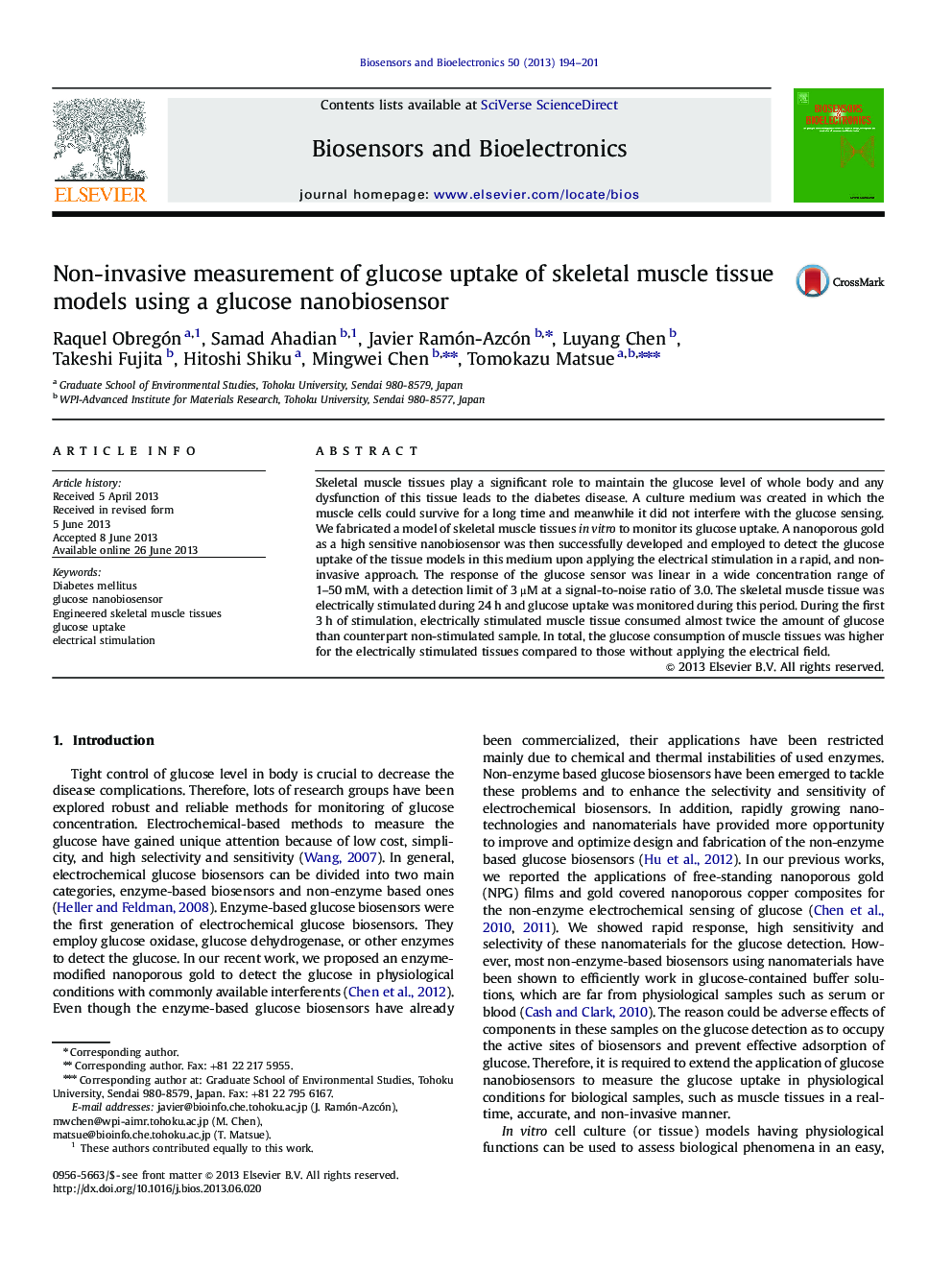| Article ID | Journal | Published Year | Pages | File Type |
|---|---|---|---|---|
| 7233832 | Biosensors and Bioelectronics | 2013 | 8 Pages |
Abstract
Skeletal muscle tissues play a significant role to maintain the glucose level of whole body and any dysfunction of this tissue leads to the diabetes disease. A culture medium was created in which the muscle cells could survive for a long time and meanwhile it did not interfere with the glucose sensing. We fabricated a model of skeletal muscle tissues in vitro to monitor its glucose uptake. A nanoporous gold as a high sensitive nanobiosensor was then successfully developed and employed to detect the glucose uptake of the tissue models in this medium upon applying the electrical stimulation in a rapid, and non-invasive approach. The response of the glucose sensor was linear in a wide concentration range of 1-50 mM, with a detection limit of 3 μM at a signal-to-noise ratio of 3.0. The skeletal muscle tissue was electrically stimulated during 24 h and glucose uptake was monitored during this period. During the first 3 h of stimulation, electrically stimulated muscle tissue consumed almost twice the amount of glucose than counterpart non-stimulated sample. In total, the glucose consumption of muscle tissues was higher for the electrically stimulated tissues compared to those without applying the electrical field.
Related Topics
Physical Sciences and Engineering
Chemistry
Analytical Chemistry
Authors
Raquel Obregón, Samad Ahadian, Javier Ramón-Azcón, Luyang Chen, Takeshi Fujita, Hitoshi Shiku, Mingwei Chen, Tomokazu Matsue,
